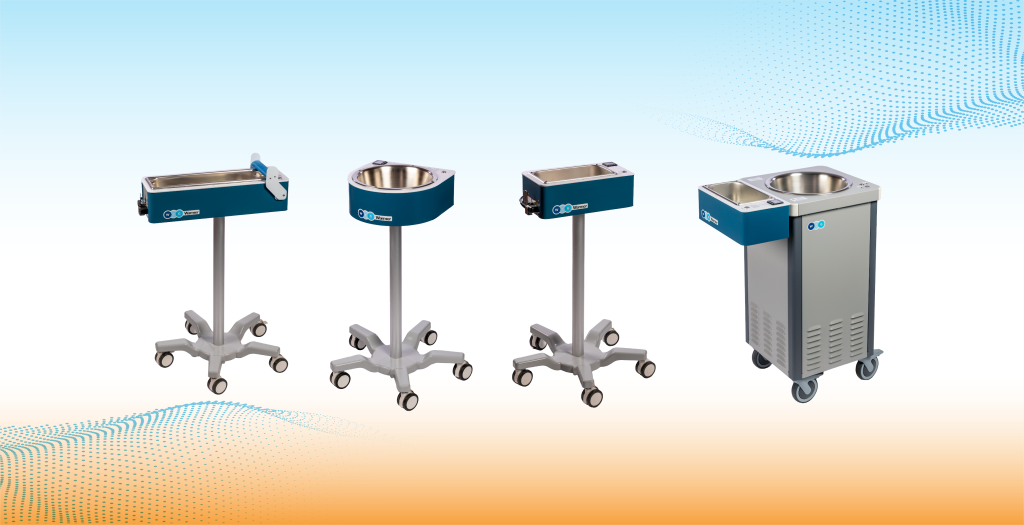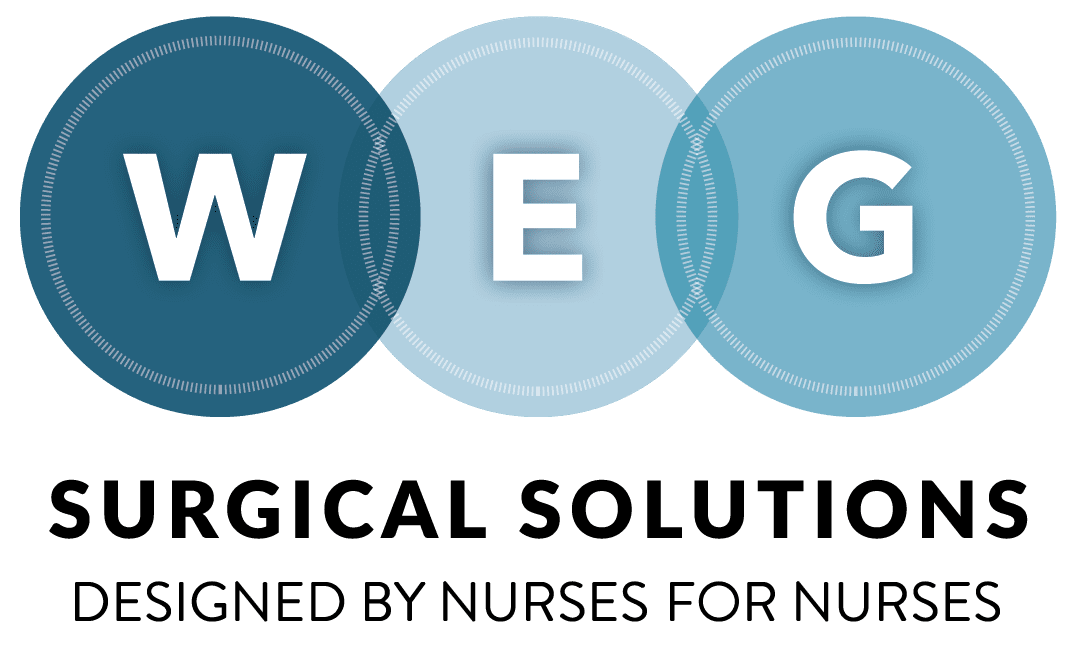
DEMONSTRATION VIDEOS
FAQs
Does a WEG Warmer™ require WEG’s drapes?
WEG Surgical Solutions Warming System is designed with expert nurses to reduce unexpected events during surgical procedures. The system is built to precisely control temperature, aid drape placement and provide additional protection to help prevent breach of the sterile barrier. We therefore only recommend the use of WEG Drapes with the WEG Warmers.
- The drapes are designed to fit the basins and allows easy and exact placement every time.
- The drapes are dual layer with a low friction layer that allows easy placement and a high friction layer provides stability.
- Dual layer drapes provide added protection for the sterile barrier.
- Sealing between the drapes allows air pockets to escape ensuring more consistent heat transfer.
What temperature should our WEG Warmer™ be set to?
- At power up, the temperature is set to 104F which is in line with the AORN guidelines for irrigation fluids. The pre-set temperature can be altered by WEG, but only within AORN Guidelines for surgical irrigation fluids.
- The temperature can always be reset to the pre-set temperature by pressing the red EZ button once.
- The temperature can be altered manually if required by:
- Pressing the green button once
- Pressing the down button twice (not too quickly)
- Within four seconds of the above action, press the infinity button
- This brings the user to the temperature change menu where the up and down buttons can be used to set the temperature anywhere within the set lower and upper limits (usually between 70F and 120F).
What is the maintenance schedule for the WEG Warmer™?
Daily Maintenance
The unit should be inspected for any fluid that may have been spilled or dripped onto the unit. Any fluid should be wiped with a clean lint-free cloth.
Monthly Maintenance
Inspect the power cord monthly for signs of damage or unusual wear. If the cord is damaged remove the unit from service and contact WEG Surgical Solutions for repair.
Use a non-abrasive cleaner at least once a month to clean the stainless steel basin. The bowl should be wiped with an alcohol wipe after cleaning to remove any cleaner residue.
CLINICAL SUPPORT
Up to 70% of surgical patients develop hypothermia perioperatively. Inadvertent hypothermia can be caused by cold operating rooms, effects from anesthesia , exposure to the environment and administration of cold intravenous or irrigation fluids. The adverse effects of unplanned hypothermia include increased blood loss, morbid cardiac events, impaired wound healing and increased mortality (1).
Hypothermia is defined as a core body temperature below 36°C. If not deliberately induced, it is said to be inadvertent because it develops accidentally during a period when normal protective reflexes, such as shivering, are absent (4-5).
Inadvertent hypothermia is preventable, and by increasing nurses’ knowledge and awareness, its incidence may be reduced (6). Preventing unplanned hypothermia increases patient comfort and prevents associated complications. It can be achieved by simple preventative measures. (2) It is therefore essential that nurses, whether on surgical wards or operating room staff, have knowledge of the contributing factors, complications and methods of preventing inadvertent hypothermia. This combined with vigilant patient care will help to prevent or dramatically reduce the incidences of this condition (7).
REFERENCES
1. Knaepel A. Inadvertent perioperative hypothermia: a literature review. J Perioper Pract. 2012;22(3):86-90.
2 . Burger L, Fitzpatrick J 2009 Prevention of inadvertent perioperative hypothermia British Journal of Nursing 18 (8) 1114-1119
3. Lynch S, Dixon J, Leary D 2010 Reducing the risk of unplanned perioperative hypothermia AORN Journal 92 (5) 553-65
4. Craft TM, Upton PM (2001) Key Topics in Anaesthesia: Clinical Aspects. BIOS Scientific Publishers, Oxford
5. Jeran L (2001) Patient temperature: an introduction to the clinical guideline for the prevention of unplanned perioperative hypothermia. J Perianesth Nurs 16(5): 303–13
6. Bernthal EMM (1999) Inadvertent hypothermia prevention: the anaesthetic nurses` role. Br J Nurs 8(1): 17–25
7. Fiedler MA (2001) Thermoregulation: anaesthetic and perioperative concerns. J Am Assoc Nurse Anesth 69(6): 485–91
PATENTS
WEG SUPPORT INFO
Please review our FAQs found above to see if we can help you through those answers. If not, please submit the form below.
